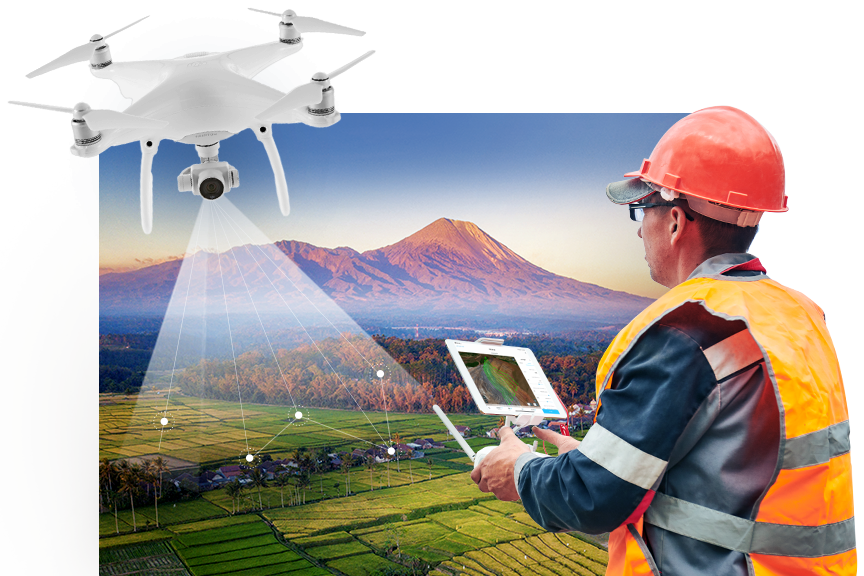The design industry is watching a technological renaissance, and drone surveying is at the lead on this transformation. Together with the ability to be able to capture high-resolution aerial imagery and make detailed maps within a fraction of the time it takes traditional methods, drones are changing the way surveyors and construction groups approach their tasks. As construction internet sites become increasingly intricate, the precision and efficiency provided by drone technology are usually essential for remaining on schedule and within budget.
The benefits of using drones for surveying will be vast and far-reaching. From improving accuracy and efficiency inside of land surveys to be able to providing valuable insights in environmental supervising and real real estate valuation, drones offer you a versatile application for professionals throughout various sectors. Since we explore the numerous facets of drone surveying, it gets clear this modern approach is not merely some sort of passing trend yet a critical component in shaping the future of construction and architectural. Whether you are a seasoned surveyor or a newcomer towards the field, becoming familiar with how drone technologies can enhance your function is key to navigating the changing landscape of structure.
Great things about Drone Surveying
Drone surveying has transformed the development industry by considerably enhancing accuracy and speed in files collection. Unlike conventional methods that need extensive manpower and equipment, drones can easily swiftly cover significant areas in the fraction of the particular time. This performance reduces the period spent on internet site, allowing projects to go forward at a faster pace when minimizing labor expenses. With high-resolution cameras and advanced sensors, drones can catch detailed images and create accurate topographical routes that are vital for effective planning and execution.
Another important advantage of drone surveying is the particular improved safety it offers. Construction internet sites can be harmful environments, and standard surveying often calls for workers to get around treacherous terrain or even heights. Drone Surveyors Gloucestershire get rid of many of these kinds of risks by executing aerial surveys through a safe length, thus reducing the opportunity of accidents and injuries. This focus about safety not just protects workers although can also cause fewer delays and better overall project duration bound timelines.
Furthermore, the data accumulated by drones is usually highly necessary for well informed decision-making and task management. Drones give real-time data of which can be examined to monitor progress, discover issues early in, and track alterations over time. The integration of advanced software allows for in depth data analysis, allowing construction teams to be able to visualize project improvements, optimize resource share, and ultimately boost project outcomes. Like a result, drone surveying is not really just a tendency but a trend in how structure projects are managed and executed.

Revolutionizing Design with Drones
Drone surveying is transforming the construction industry simply by enhancing precision and efficiency in task management. Traditional surveying methods often include labor-intensive processes of which can be time consuming and prone to be able to human error. In contrast, drones give a rapid and accurate alternative, allowing surveyors to gather great amounts of information rapidly. With high-resolution cams and advanced receptors, drones can catch detailed topographical info that informs design and planning, eventually leading to cleverer decision-making throughout the construction lifecycle.
Moreover, the integration of drone technology in structure projects results in important cost savings. By eliminating many manual surveying tasks, companies can reduce labor costs in addition to minimize project holds off. Drones facilitate current data collection and analysis, which method that teams could quickly identify in addition to address potential concerns before they turn. This proactive strategy not only helps to keep projects on plan but also assists maintain budget difficulties, making drone surveying a financially experienced option for building firms.
As the construction sector is constantly on the embrace scientific advancements, the function of drones is set to broaden further. Future tendencies indicate that as drone technology evolves, so too can its applications inside of construction. From 3 DIMENSIONAL mapping to aerial inspections, the features of drones can help improve safety plus compliance on building sites. This move towards incorporating drone surveying into standard practice signifies a commitment to innovation, improving overall project high quality and pushing the boundaries of what is achievable in building management.
Future Trends within Drone Surveying
As technological innovation continues to move forward, the ongoing future of drone surveying seems incredibly encouraging. One significant pattern will be the increasing the usage of artificial brains and machine mastering into drone surveying systems. These technologies enable drones to be able to analyze data throughout real time, generating it possible to identify patterns plus anomalies that individual surveyors might miss out on. This evolution not really only enhances the accuracy of surveys but also streamlines typically the decision-making process, enabling quicker responses in order to issues and customizing project timelines.
Another noteworthy trend is the particular enhanced capabilities of drones themselves. Using ongoing improvements within battery-life, payload ability, and sensor technologies, drones are becoming more effective in several surveying applications. Typically the advent of multi-spectral and thermal image resolution sensors is particularly transformative, enabling more precise data collection for environmental checking and agricultural analysis. This expanded efficiency creates opportunities for comprehensive site tests that were previously time-consuming and resource-intensive.
Last but not least, regulatory frameworks happen to be evolving to cater to the rise associated with drone technology within surveying. Governments plus aviation authorities are increasingly recognizing typically the value of drone surveying, leading to be able to more streamlined codes that support larger adoption. As rules be a little more defined and even accessible, businesses will be better placed to implement drone surveying into their methods, paving the way in which regarding new applications throughout industries and considerably enhancing efficiency and cost-effectiveness in future projects.
